Lighter than cast iron, more reliable than aluminum. Types of heating radiators: steel flat, tubular and plate
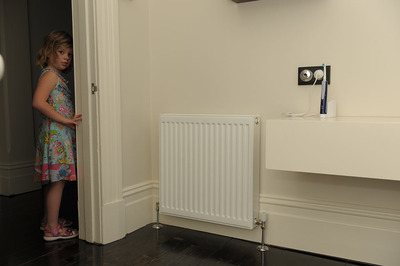
There are several types of heating devices. Each of them has its own advantages and disadvantages. Owners have the right to choose the model that will satisfy all their needs and suit their needs. technical characteristics.
Recently, steel batteries have become increasingly popular, as steel is easy to process and has good thermal conductivity.
Types of steel heating radiators
Steel heating radiators can be divided into three species by design features:
- panel;
- lamellar;
- tubular.
Flat panel
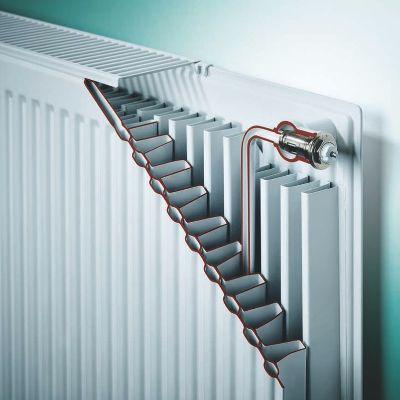
This battery is two steel plates, in which they are made flat-bottomed depressions. When two plates are connected, they are formed channels for circulation of the coolant.
The plates are connected by spot welding. The device has corners holes for incoming and outgoing water. If necessary, install on one of the fittings air bleed valve.
A heat exchanger is installed on the pipe through which the coolant enters the heater. tap for regulating water supply.
These models have convection function. Convection fins are located on the side that is attached to the wall. During the heating of the heater, these fins also heat up. Hot air rises upward, creating natural convection, which accelerates the heating of the room.
Important! In some models of steel panel heating devices convection fins are absent.
One radiator can accommodate from one to three panels. Depending on their quantity, as well as the presence of a convection function, a distinction is made 7 types panel heaters:
- 10 - has one panel. Does not have a convector or cladding.
- 11 - has one panel and convector.
- 20 - has two panels and an air outlet grille on top. The convector is missing.
- 21 — two-panel a heater with a protective casing and a convector attached to one of the panels.
- 22 — two-panel device with protective covers and convectors.
- 30 — three-panel radiator covered from above by an air outlet grille.
- 31 — three-panel device with protective covers and convector.
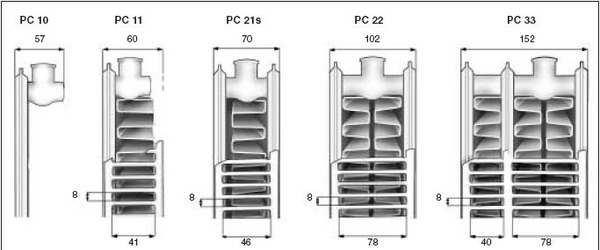
Photo 1. Internal structure of some types of steel panel radiators, small and large.
Tubular or sectional
Some tubular heaters look like regular cast iron sectional batteries. They are also called sectional, since the coolant in them circulates through sections connected into a single structure.
One section of such a device can have from 2 to 6 tubes. Tubular heating devices can be of any size. The smallest height makes up 0.19 m, and the maximum is 3 meters.
Plate-shaped
Plate heaters consist of from a large number of plates, a heat exchanger and a casing.
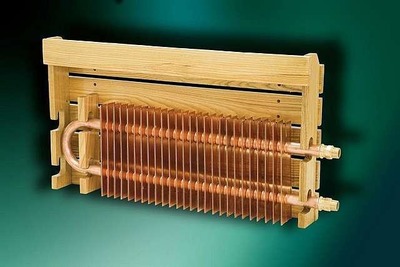
The heat exchanger is an arched pipe. The number of elbows (bends) of the pipe depends on the specific model. As a rule, they use one or two knees.
The pipe is heated by the coolant and then transfers heat to the plates. The plates act as a convector, but the convection created by the ribs of panel heating devices is much stronger.
Protective cover performs two functions. Due to the fact that the plates and the pipe are very hot from the coolant, they can burn the residents of the house. The temperature of the casing does not exceed 40 °C. In addition, this casing plays aesthetic role. Externally, such batteries are similar to panel batteries.
The technical characteristics of steel plate heaters are such that they can be part of heating systems of panel houses, as they are able to withstand pressure up to 40 atmospheres.
Attention! Over time heat transfer steel plate heating devices decreases due to dust, settling on parts of the structure. To avoid this, the device must be cleaned periodically.
Technical characteristics of steel batteries
Technical characteristics of batteries include:
- heat transfer;
- inertia;
- working pressure.
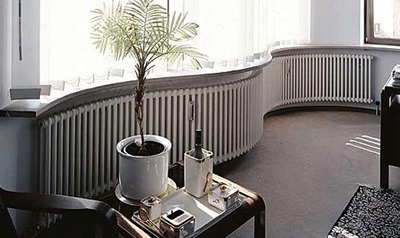
Each type of heating structure has its own technical features. Heat dissipation depends on several factors:
- sizes radiator;
- availability protective cover;
- functions convection;
- masses.
The protective casing reduces heat transfer, while the presence of a convector increases it.
Inertia — the property of steel to quickly heat up and cool down, depending on the temperature of the carrier.
Weight each radiator is determined by the model and dimensions. But, in comparison with their cast iron counterparts, steel batteries are much lighter.
Working pressure, which steel heating devices can withstand, depends on the specific model and the thickness of the walls of the pipes and sections. Thus, panel radiators can withstand pressure up to 40 atmospheres, while tubular models will not tolerate higher 13 atmospheres.
Useful video
Watch the video which talks about the types of steel panel radiators.
Selecting a radiator type
Model selection depends on the needs and technical characteristics of the system heating. Any type of radiator will be suitable for private houses with an autonomous heating system.
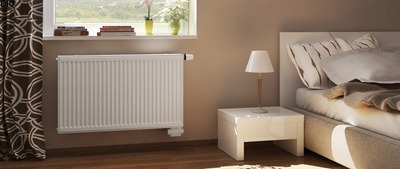
If you are purchasing a device for an apartment located in a multi-story building, you should think about purchasing a panel model, since the operating pressure in such houses is quite high.
In addition, in high-rise apartment buildings the heating system “suffers” from pressure surgesTubular and plate batteries may not withstand water hammer, become deformed or lose their tightness.
When choosing a heater, you should also consider interior of the premises. There are decorative models, the height of which is only 20 cmThey are installed near the floor and serve not only as heating devices, but also as interior elements.





